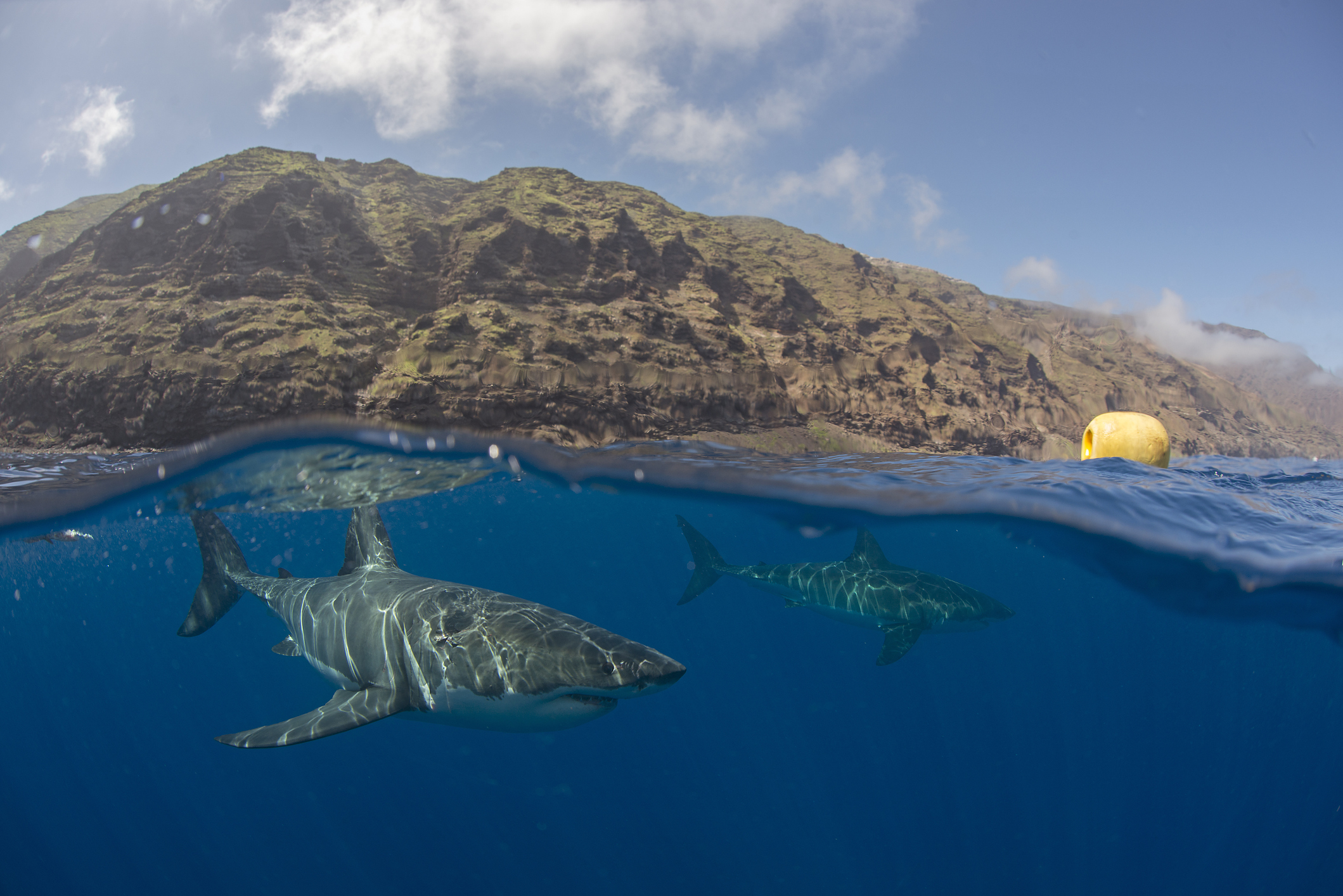Secret great white shark social club discovered off Mexican coast
The first rule of Shark Club is: "You do not talk about Shark Club."

Scientists have discovered a secret great white shark social club in the clear blue waters of Guadalupe Island, off the western coast of Mexico.
Dozens of sharks descend on the island's coastline to forage every fall and winter, but their Pacific holidays are hardly solitary getaways. According to new research published March 23 in the journal Biology Letters, a group of tagged great whites formed tight cliques during the 2017 and 2018 seasons. They preferred to patrol for food with close buddies or in same-sex pairs, sometimes spending more than an hour swimming around together.
One pair of sharks particularly astonished scientists by spending roughly 70 minutes swimming together — a far longer friend date than any of the other sharks shared.
"Seventy minutes is a long time to be swimming around with another white shark," lead study author Yannis Papastamatiou, a marine scientist at Florida International University, said in a statement.
Lengthy interactions like these are likely to be "social associations" and not just random interactions, Papastamatiou added — think of it like the shark version of having a hunting buddy.
For their new study, the researchers tagged six great white sharks (three male, three female) near Guadalupe Island between October 2017 and December 2018. Dubbed "super social tags," the monitors tracked each shark's swimming speed, depth and direction, and also alerted researchers anytime a tagged shark came into close proximity with another tagged shark. Each tag, which also contained a small video camera, popped off the shark's dorsal fin after about five days.
More than 30 great white sharks at the island had already been tagged by previous research expeditions, giving researchers plenty of opportunities to see their super social tags in action. The team recorded hundreds of social interactions between the great whites — some short, some much longer.
Get the world’s most fascinating discoveries delivered straight to your inbox.
In general, male sharks preferred to hang out with other male sharks, and female sharks preferred the company of other females. But the social behavior of each shark varied wildly. One shark interacted with a dozen others in a 30-hour span before shaking loose its tag, while another shark kept its tag on for five days and associated with only two other sharks.
Many of the great white interactions occurred near a seal breeding ground, suggesting that perhaps the sharks spend more time with each other when prey is near, in order for one shark to take advantage of another's hunting success, the researchers said.
"They aren't working together but being social could be a way to share information," Papastamatiou said.
Given the study's small sample size, the scientists concluded that more observations are needed to draw any firm conclusions about the great white social networks of Guadalupe Island.
Originally published on Live Science.

Brandon is the space / physics editor at Live Science. With more than 20 years of editorial experience, his writing has appeared in The Washington Post, Reader's Digest, CBS.com, the Richard Dawkins Foundation website and other outlets. He holds a bachelor's degree in creative writing from the University of Arizona, with minors in journalism and media arts. His interests include black holes, asteroids and comets, and the search for extraterrestrial life.


